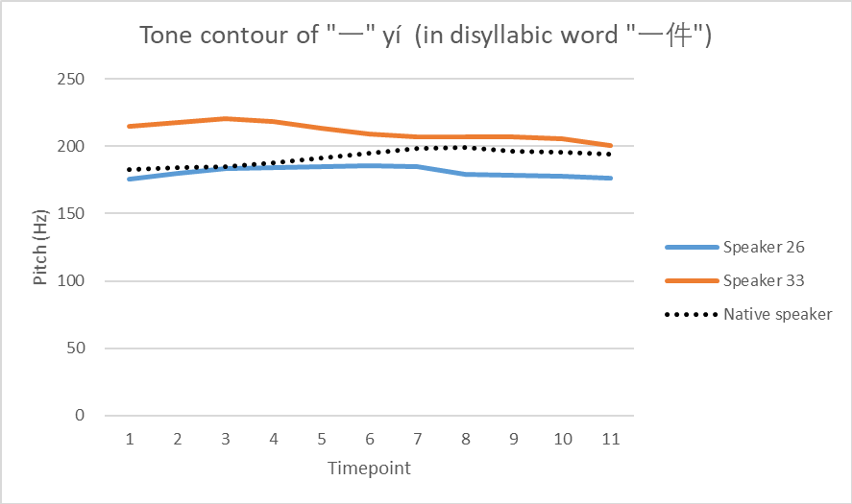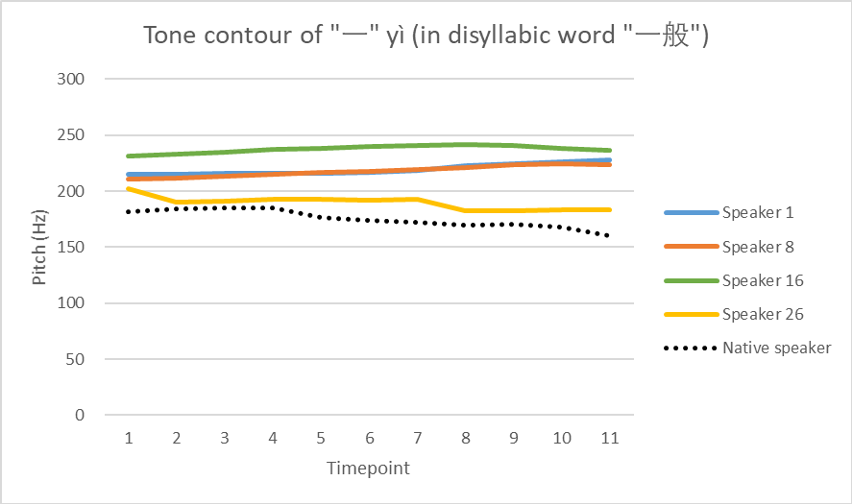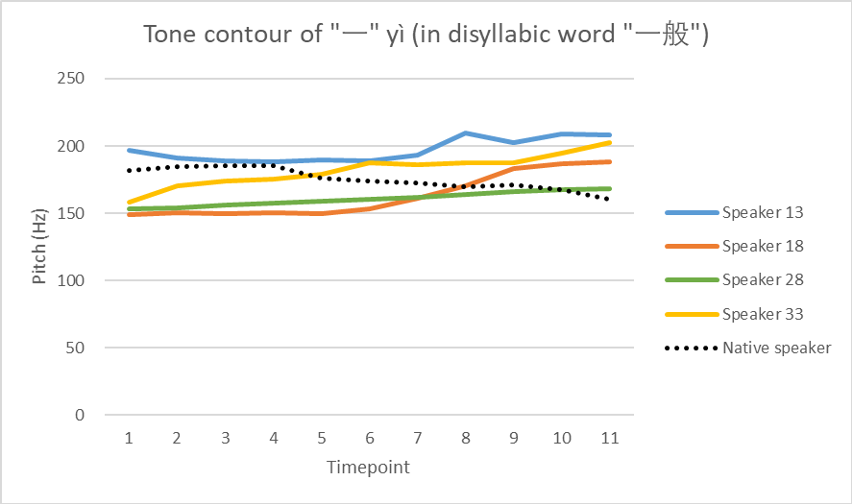Absence of tone sandhi for 'yi' followed by a Tone 4 word

Native speaker
Speaker 26
Speaker 33
- In the monosyllabic word “一”, it is pronounced with Tone 1. In multisyllabic words, “一” is pronounced with Tone 2 when it is followed by a word with Tone 4; it is pronounced with Tone 4 when it is followed by a word with Tone 1/2/3.
- The native speaker's tone contour of “一” in the word “一件” shows rising trend, from 180Hz at the beginning to 200Hz to the end. Note that because the speech data was elicited from connected speech with fast speed, the rising trend is not dramatic.
- The learners' tone contour of “一” in the word “一件” are relatively leveled, similar to the citation Tone 1.
Absence of tone sandhi for 'yi' followed by a Tone1/2/3 word

Native speaker
Speaker 8
Speaker 26
Speaker 1
Speaker 16

Native speaker
Speaker 18
Speaker 33
Speaker 13
Speaker 28
- In the monosyllabic word “一”, it is pronounced with Tone 1. In multisyllabic words, “一” is pronounced with Tone 2 when it is followed by a word with Tone 4; it is pronounced with Tone 4 when it is followed by a word with Tone 1/2/3.
- The native speaker's tone contour of “一” in the word “一般” shows falling trend, from 190Hz at the beginning to 155Hz to the end. Note that because the speech data was elicited from connected speech with fast speed, the falling trend is not dramatic.
- The learners' tone contour of “一” in the word “一般” show two trends - some of them have leveled tone contour, similar to citation Tone 1, and some of them applied the wrong tone sandhi rule and the tone contours show rising trend.
Suggestions for teachers:
- explicitly introduce the two situations for applying tone sandhi rules for 'yi' in multisyllabic words
- remind students to understand tone contour trends for the two situations
Hits: 4432